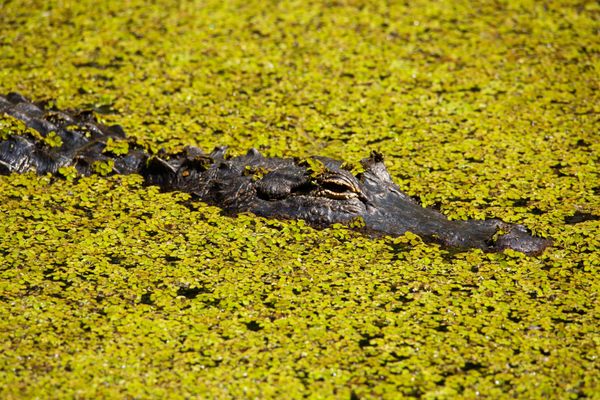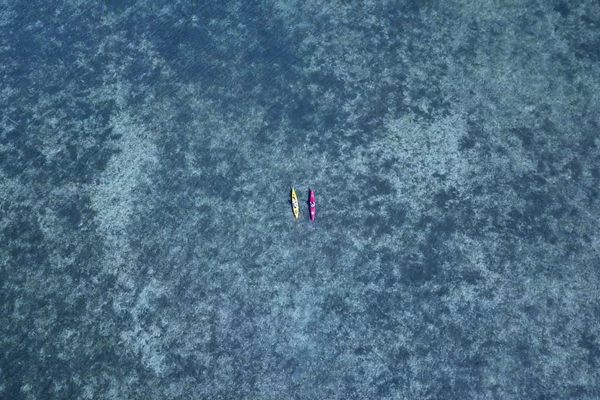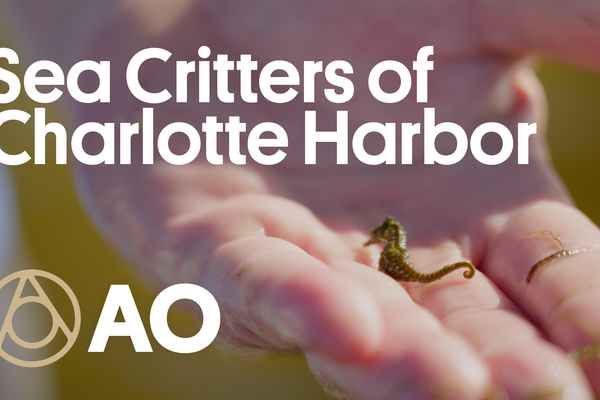
Fantastic Flora and Fauna: Where to Find Rare Wildlife and Curious Plants in Florida
Explore 8 spectacular spots in search of charismatic plants and wildlife that can only be found in the Sunshine State.
Florida boasts an incredible 269 species of animals and over 230 plants found exclusively within its borders—if you know where to look. From Cape Canaveral on the Atlantic to the westernmost Keys, incredible flora and fauna are waiting to be discovered, including enormous loggerhead sea turtles, diminutive Key deer, rare Florida panthers, elusive ghost orchids, and exotic Roseate Spoonbills.
Use these tips to make the most of your Florida wildlife adventure:
Plan for the seasons. Winter is an ideal time to view animals, when heat and humidity are lower and millions of migratory birds are overwintering. During this dry season, which begins in November and extends to May, it’s easier to see animals gathering at watering holes. The wet season, from June to October, can present challenges like afternoon thunderstorms, heat and humidity, and difficulty viewing animals that are moving to drier grounds.
Stay alert. Alligators and snakes abound in Florida and play vital roles in the ecosystem. They are rarely aggressive towards people unless provoked, so stay on trails, read park signs, and make sure everyone in your crew is paying close attention to their surroundings.
Don’t rely on your phone for everything. If you end up with no cell coverage or your battery runs out, you may not be able to access trail apps or other tools. Study park guides before heading out or take a printed trail map. Binoculars and SLR cameras with telephoto lenses are still the most effective ways to view and photograph wildlife.
Keep a journal. You may not be a serious birder right now, or you may not care whether that was an armadillo or opossum that just crossed your path, but jot down a few notes anyway so you can look back later and recall which species you witnessed and where. If you’re traveling with kids, make it an activity to encourage them to become the family naturalists.
Once you’re ready to explore, here are some of Florida’s best spots for observing rare wildlife.
1. Big Cypress National Preserve
No South Florida photo safari is complete without a visit to Big Cypress National Preserve, where the big game lies: Florida panthers. Though there are fewer than 200 of these endangered cats in existence, the 729,000 acres of this vast swampland are where most can be found. A picture of panther tracks on the ground will earn you bragging rights, since the tawny cats are rarely seen, coming out to hunt only at dusk and dawn. Other “big” sightings include manatees at the Welcome Center boardwalk, alligators all around, 30 species of snakes (all nonvenomous), and the occasional river otter or Florida black bear. In June or July, you might spy a protected ghost orchid in bloom, the rarest of the 30 types of orchids found in the park. As a mostly freshwater habitat, Big Cypress supports more than 60 species of fresh and saltwater fish and over 200 species of birds, identified on a convenient checklist you can pick up at the park’s visitor centers. Hiking, canoeing, and kayaking tours are available, as well as Ranger-led wet walks, boardwalk talks, interpretive canoe tours, and dark sky astronomy programs.

2. Dry Tortugas National Park
Photos of Dry Tortugas National Park tend to feature the enormous 19th-century Fort Jefferson with its dramatic moat, 70 miles out into the Gulf of Mexico. But the park actually extends far beyond this fort and its island, with a roughly 100-square-mile radius into the sea. The park territory encompasses seven small islands and is 99 percent water. And those stunning aqua waters are where you want to be—snorkeling among placid schools of brilliant yellow French grunts while spotting camouflaged angelfish among an astounding 30 kinds of coral. Colorful Graysbies, Stoplight Parrotfish, and yellowtail snappers hide amid sea anemones and sponges. Prepare to share space with the larger denizens of the sea, such as Goliath groupers, barracudas, nurse sharks, and huge tarpons. For those keeping track, the sea turtles you’re likely to encounter could be loggerhead, leatherback, hawksbill, Kemp’s ridley, or green turtles, since five of the world’s seven species live here. Back on land, there are close to 300 species of birds you might find flocking around the fort, particularly during spring migration when the park’s Garden Key serves as a convenient rest stop. During mating season, Dry Tortugas also features the only nesting colonies of Sooty Terns, Masked Boobies, Brown Noddies, and Magnificent Frigatebirds in the contiguous U.S.
3. Fakahatchee Strand Preserve State Park
Life can get a little wild “out in the Fak.” These 70,000-plus acres in Southwest Florida house more native orchid species than any other place on the continent, along with vulnerable animals including the American crocodile, Everglades mink, diamondback terrapin, West Indian manatee, wood stork, Florida black bear, and yes, the Florida panther. The largest state park in Florida, Fakahatchee showcases the diversity of its flora and fauna with a wide variety of trails, starting with the 11-mile Janes Scenic Drive, a rustic, unpaved road well-suited for spotting swooping swallow-tail kites, hawks, and bald eagles. The East Main Tram and the West Main Tram are old logging roads that stay dry year-round for relatively easy hiking and biking and possible glimpses of bobcats, minks, or alligators. At the lower end of the park, tuck into the half-mile boardwalk through the old-growth bald cypress of the Fakahatchee Strand swamp. Here, lush ferns and 100-foot-tall trees studded with orchids (44 species) and bromeliads (14 species) create a rainforest-like experience, ending at an observation deck overlooking an alligator pond.

4. Ellie Schiller Homosassa Springs Wildlife State Park
Manatees are a must-see for many Florida visitors, and at Ellie Schiller Homosassa Springs Wildlife State Park, a mix of wild and rehabilitated manatees are in residence year-round. The park’s one-mile paved walkway and elevated boardwalk take you on a tour of various captive native animals, all of which are unable to survive in the wild on their own, including black bears, otters, red wolves, Key deer, flamingos, bobcats, panthers, alligators, and many birds of prey. At the center is Homosassa Spring, with the popular floating “Fish Bowl” underwater observatory where you’ll be surrounded by manatees and schools of fish swimming in the crystal clear spring water. Outside the entrance to the park (a brief boat or tram ride away) is a short wetlands birding trail you can take to see overwintering birds such as Black-and-white Warblers and Yellow-bellied Sapsuckers.

5. National Key Deer Refuge
There’s only one place in the world to see the smallest white-tailed North American deer in the wild, and that’s the lower Florida Keys, where they roam freely and sometimes swim between the two dozen islands of their habitat. Although you might very well spot a deer when driving through the Keys, the best way to view them is walking the trails at the National Key Deer Refuge, a roughly 9,000-acre preserve on Big Pine Key and No Name Key. No larger than a Golden Retriever, the adorable deer are cute and approachable, and may seem “friendly,” but keeping your distance is the best way to help protect this endangered species. Be sure to slow down when driving through their territory and leave them to feed on the 160 species of plants in their regular diet—no human snacks! The refuge’s variety of paved and unpaved trails open an hour before sunrise and close a half hour after sunset, and these are in fact the best times to see a few of the 800 or so bucks, does, and fawns that make their home here.

6. Bok Tower Gardens
Heed the call of the Gothic Revival Singing Tower, beckoning with its carillon bells, and soak up the beauty of Bok Tower Gardens to enjoy a uniquely inspiring day in nature. What began as a private bird sanctuary a century ago is now also an important conservation site for more than 60 of Florida’s rarest plant species. The National Collection at Bok Tower Gardens is preserving botanic diversity as part of the Center for Plant Conservation so that these plants can be propagated in new areas. Interpretive signage scattered around the 70-acre garden makes it easy to learn about native plants and pollinators while strolling past burbling fountains, fragrant magnolias, and panoramic vistas. Take a seat at the peaceful “window by the pond” to watch wading birds amid the lily pads, or pause in a wooded copse to observe a huge banana spider in its dewy web. The leisurely pace of the resident endangered gopher tortoises will remind you to take it easy, perhaps with a beer or ice cream at the cafe.
7. Merritt Island National Wildlife Refuge
In a fascinating juxtaposition of modern progress and age-old survival, this wildlife conservation park that shares an island with NASA’s Kennedy Space Center holds more vulnerable species than almost anywhere else in the U.S. WIthin the marshes, dunes, estuaries, and scrub of the 140,000-acre refuge live more than 1,500 species of plants and animals, including 15 that are federally listed. The endangered loggerhead sea turtle, the world’s largest hard-shelled turtle, is the star of Merritt Island, monitored closely during its May-to-October nesting season. On a ranger-led nighttime sea turtle walk, you might witness a 200-plus-pound female loggerhead coming ashore to lay her eggs. Later, follow #TurtleTuesday reports on social media to watch the number of nest sightings growing throughout the summer, when the count typically tops 1,000. For other wildlife viewing, you can hike, drive, bike, or boat around the island, or take a summer nighttime bioluminescence kayaking tour in the Cape Canaveral lagoons. The popular seven-mile Black Point Wildlife Drive is a one-way loop with space for cars to pull over for closer views of animals around observation spots and trailheads. Manatee sightings are common at one of two observation decks, where you’re also likely to spy dolphins, alligators, osprey, and Roseate Spoonbills. The area is a key site on the Great Florida Birding Trail, and home to over 300 bird species.

8. Yellow River Marsh Preserve State Park
Walking the swampy trails at Yellow River Marsh Preserve State Park will catapult you back in time to Florida in its native state, with hawks gliding overhead and colorful expanses of pitcher plants reminding you that this is one of the last remaining tracts of wet prairie in the state. And what exactly is wet prairie, you may ask? Wetter than a meadow, drier than a marsh, the rich, soggy soil in these flatlands supports some of the greatest natural diversity in the U.S., including plants, birds, snakes, salamanders, turtles, foxes, and other wildlife you’re unlikely to see elsewhere. The Gulf saltmarsh snake is one of the rare reptiles found in the 2,000+ acres of the aquatic preserve that surrounds the state park. And everyone is fascinated by the carnivorous pitcher plants, which trap, kill, and digest insects—and occasionally even small frogs and mammals—in their invitingly beautiful tubular leaves.
Sponsored by VISIT FLORIDA.









































Follow us on Twitter to get the latest on the world's hidden wonders.
Like us on Facebook to get the latest on the world's hidden wonders.
Follow us on Twitter Like us on Facebook